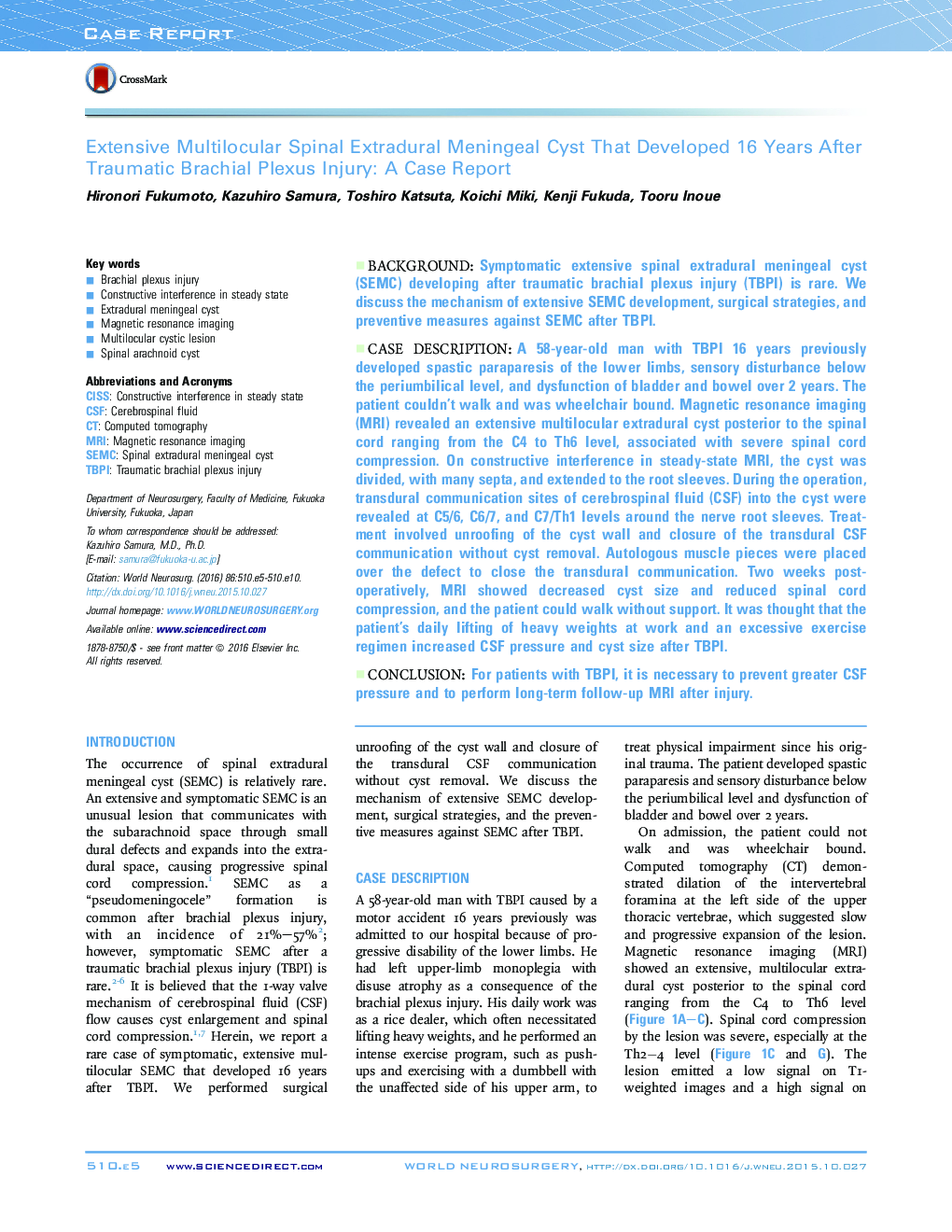| Article ID | Journal | Published Year | Pages | File Type |
|---|---|---|---|---|
| 6044815 | World Neurosurgery | 2016 | 6 Pages |
BackgroundSymptomatic extensive spinal extradural meningeal cyst (SEMC) developing after traumatic brachial plexus injury (TBPI) is rare. We discuss the mechanism of extensive SEMC development, surgical strategies, and preventive measures against SEMC after TBPI.Case DescriptionA 58-year-old man with TBPI 16 years previously developed spastic paraparesis of the lower limbs, sensory disturbance below the periumbilical level, and dysfunction of bladder and bowel over 2 years. The patient couldn't walk and was wheelchair bound. Magnetic resonance imaging (MRI) revealed an extensive multilocular extradural cyst posterior to the spinal cord ranging from the C4 to Th6 level, associated with severe spinal cord compression. On constructive interference in steady-state MRI, the cyst was divided, with many septa, and extended to the root sleeves. During the operation, transdural communication sites of cerebrospinal fluid (CSF) into the cyst were revealed at C5/6, C6/7, and C7/Th1 levels around the nerve root sleeves. Treatment involved unroofing of the cyst wall and closure of the transdural CSF communication without cyst removal. Autologous muscle pieces were placed over the defect to close the transdural communication. Two weeks postoperatively, MRI showed decreased cyst size and reduced spinal cord compression, and the patient could walk without support. It was thought that the patient's daily lifting of heavy weights at work and an excessive exercise regimen increased CSF pressure and cyst size after TBPI.ConclusionFor patients with TBPI, it is necessary to prevent greater CSF pressure and to perform long-term follow-up MRI after injury.
